|
Fruehauf
Trailer Company During World War Two
Detroit, MI
1918-1963
Fruehauf Corporation
1963-1989
Fruehauf Trailer Corporation - Purchased by Wabash National in 1997
1989-Present
This page updated 2-10-2025.
The seed that became the
Fruehauf Trailer Company happened in 1914 when August Fruehauf was asked
by a friend to build a trailer to tow a boat behind a Ford Model T.
August Fruehauf at the time was a carriage builder and blacksmith in
Detroit, MI. It remains unknown whether anyone had previously made
a trailer for a boat, but August Fruehauf has been historically credited
with this. August named his new invention a "semi-trailer" that
has become synonymous with the 40-foot and 52-foot semi-trailers that
are now pulled by over-the-road tractors in the United States. These
tractor-trailer combinations dominate the American Interstate Highways.
It all started with someone in Detroit wishing to take his boat "up
north," as persons from Michigan express it, to his lake cottage.
In 1918 August Fruehauf founded the Fruehauf Trailer Company. For
many years, it was a leader in semi-trailer design and one of the
largest trailer companies in the country. Fruehauf Trailer Company
was awarded over 1,000 patents, showing its leadership in semi-trailer
design.
Sometimes things don't
work out well. While August created a leader in the trailer
industry, the Fruehauf family lost control of the company in 1963 due to
infighting. Incompetent management by the new ownership of
this once excellent company drove it into bankruptcy in 1997, when it
was purchased by Wabash National Corporation of Lafayette,
IN. Under the competent management of Wabash National, Fruehauf
trailers are still being manufactured today.
Fruehauf Trailer Company
World War Two Products: At
the time of World War Two, the company had plants not only in Detroit,
MI, its headquarters facility, but plants in seven other locations.
Table 1 shows these locations and the major contract value by site.
In total, the Fruehauf Trailer Company had $150,986,000 in major
contracts. Table 2 shows that Fruehauf delivered 6,865
trailers to Army Ordnance during World War Two.
Table 1 - Fruehauf Trailer
Company World War Two Major Contracts by Plant Location
The information below
comes from the "Alphabetical Listing of Major War Supply
Contracts, June 1940 through September 1945." This was
published by the Civilian Production Administration,
Industrial Statistics Division, Requirements and Progress
Branch January 21, 1946.
|
|
Plant Location |
Contract Value |
Products |
|
Birmingham, AL |
$10,230,000 |
Trailers |
|
Detroit, MI |
$21,421,000 |
Trailers |
|
Fort Wayne, IN |
$92,387,000 |
Trailers |
|
Kansas City, KS |
$24,133,000 |
Trailers |
|
Omaha, NE |
$222,000 |
Trailers, Steel Bridges |
|
Springfield, MD |
$97,000 |
Trailers |
|
Portland, OR |
$218,000 |
Truck Bodies |
|
Vernon, CA |
$2,278,000 |
Trailers |
|
Total |
$150,986,000 |
|
|
Table
2 - Fruehauf
Trailer Company Trailers
Accepted by Detroit Ordnance, US Army
The information below comes from "Summary Report of
Acceptances, Tank-Automotive Material, 1940-1945."
Published by Army Services Forces, Office, Chief of
Ordnance-Detroit, Production Division, Requirements and
Progress Branch,
January 21, 1946. |
|
Type |
1940 |
1941 |
1942 |
1943 |
1944 |
1945 |
Totals |
| Dollies, 3-Ton,
2W, Trailer Converter |
|
|
|
|
400 |
|
400 |
| Semi-Trailer,
3-Ton, 2W, Van |
9 |
|
|
|
|
|
9 |
| Semi-Trailer,
6-Ton, 2W, Platform |
|
|
111 |
|
|
|
111 |
| Semi-Trailer,
6-Ton, 2W, Tank, Gas, 2000 Gal. |
|
6 |
|
|
|
|
6 |
| Semi-Trailer,
6-1/2-Ton, 2W, Pipe G662 6.5 ton pipe trailer Yes.
Matches up 50 built |
|
|
|
50 |
|
|
50 |
| Semi-Trailer,
7-Ton, 2W, Cargo |
|
|
|
|
452 |
|
452 |
| Semi-Trailer,
7-Ton, 4W, Van, M26, Gun Data Computer for SCR-584 |
|
|
|
|
|
90 |
90 |
| Semi-Trailer,
11-Ton, 2W, Van, 28-Foot Body |
|
|
|
|
100 |
|
100 |
| Semi-Trailer,
12-Ton, 2W, Low Bed |
|
500 |
|
230 |
|
|
730 |
| Semi-Trailer,
16-Ton, 4W, Van, |
|
47 |
8 |
|
|
|
55 |
|
Semi-Trailer, 20-Ton, 2W, High Bed |
|
|
|
25 |
|
|
25 |
| Semi-Trailer,
40-Ton, 8W, Platform |
3 |
|
|
|
|
|
3 |
| Semi-Trailer,
M15, M15A1, For Tank Recovery |
|
|
|
376 |
349 |
379 |
1,104 |
| Semi-Trailer,
Tank, to be used with Tractor-Trucks |
|
|
|
29 |
|
|
29 |
| Trailer, 1/4-Ton,
2W, Cargo |
|
|
|
|
|
975 |
975 |
| Trailer, 8-Ton,
Tractor Crane |
|
66 |
72 |
134 |
|
|
272 |
| Trailer, 22-Ton,
6W, Low Bed |
|
|
|
|
491 |
331 |
822 |
| Trailer, 45-Ton,
12W, M9 |
|
|
82 |
600 |
890 |
60 |
1,632 |
| Totals |
12 |
619 |
273 |
1,444 |
2,682 |
1,835 |
6,865 |
Author's Note
and Disclaimer: The Detroit Office
of Ordnance of the U.S. Army was the primary purchasing entity for vehicles for the U.S. Army during World
War Two. It also purchased
vehicles for the USMC, US Navy, and for Lend-Lease. However,
there were other organizations that also purchased vehicles
including the Army Corps of Engineers, U.S. Army Air Force, U.S.
Army Signal Corps, Navy Bureau of Ordnance, Navy
Bureau of Aeronautics, and foreign countries making direct
purchases.
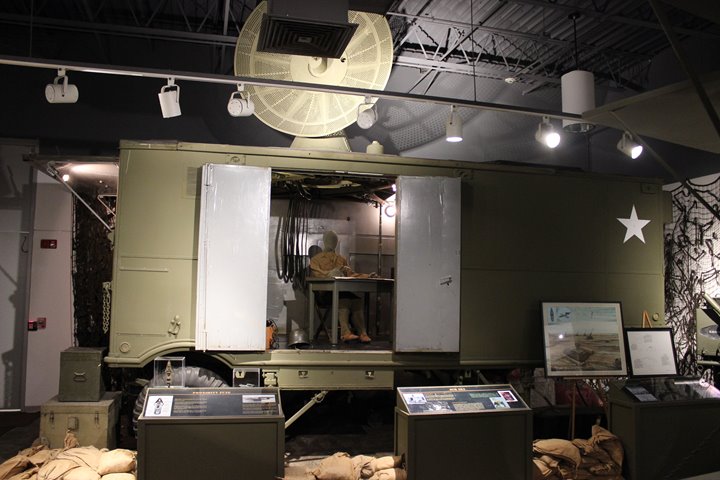
1,610 SCR-584 mobile radar anti-aircraft
battery control radars were built for the U.S. Army Signal Corps during
World War Two. Fruehauf built the trailers for the SCR-584 under
the jurisdiction of both the Signal Corps and Army Ordnance during
1943-1945. This example, on display at the National Electronics Museum in Linthicum, MD has been
identified as a Fruehauf trailer. It may very well be
the only example left of this type, making it the rarest of the surviving Fruehauf
trailers. The National Electronics Museum is a cool museum with
several displays from World War Two not found in any other museum.
Author's photo.
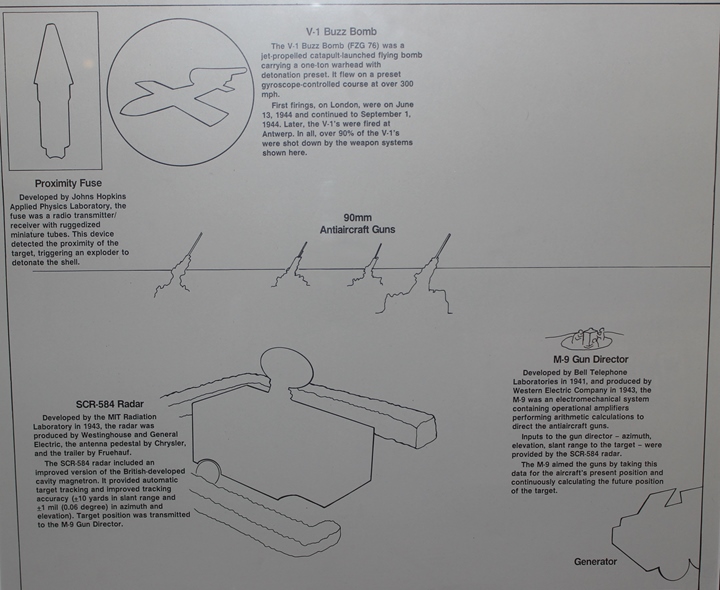
This display from the National Electronic Museum shows how the SCR-584,
housed in a Fruehauf trailer, was part of the total anti-aircraft weapons
system. Author's photo.
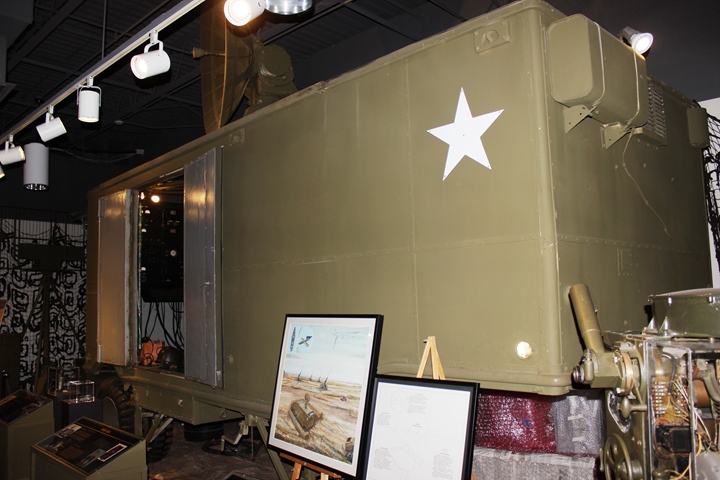
Author's photo.
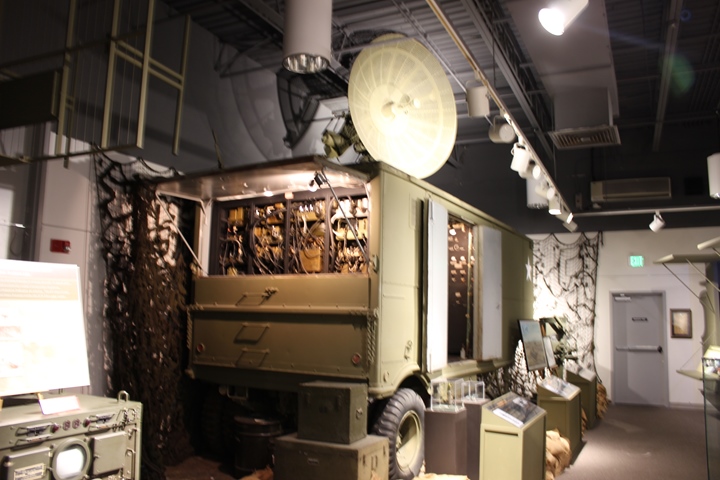
This photo shows the Chrysler-built
antenna on top of the trailer and some of the electronics in the rear.
Author's photo.
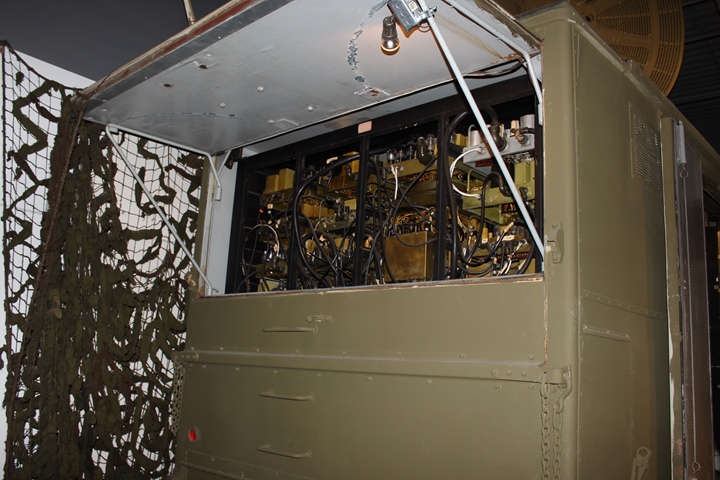
The back of the trailer opened up to allow servicing of the many
electronic chassis in the unit. Author's photo.
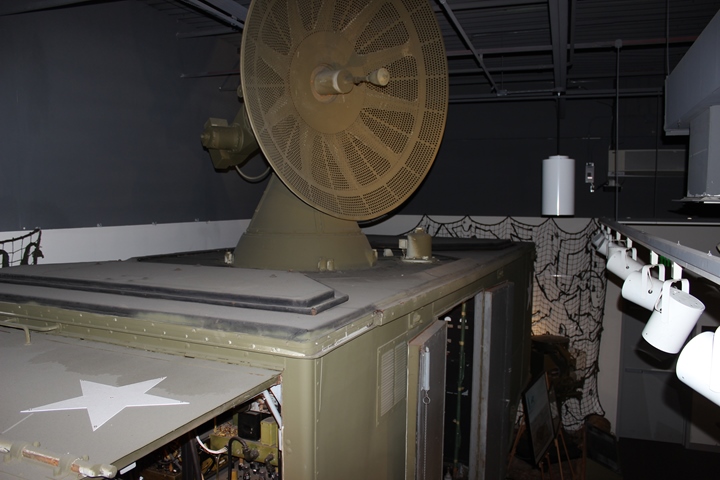
The parabolic antenna dropped down through
an opening on the roof of the trailer and was secured inside the trailer
during travel. The trailer had doors that closed up the roof to
keep out the elements during travel. Author's photo.
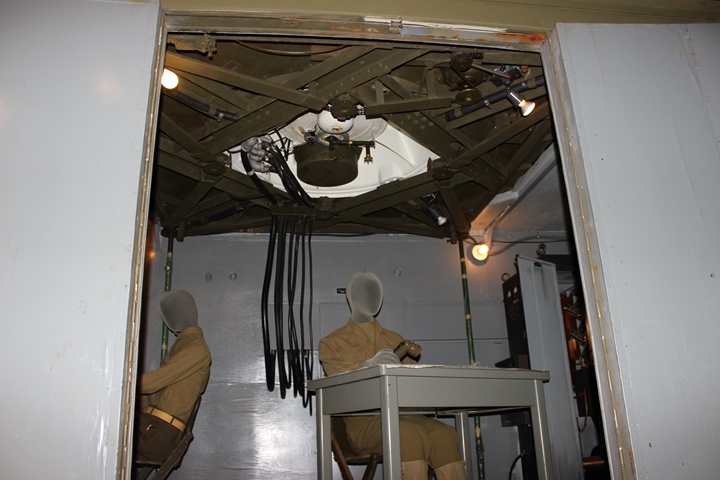
Two green poles with yellow marking can be
seen at the back of the trailer. These were two of the four guide
rods that guided the antenna and mount as it traveled up and down on the inside
of the unit.
Also visible are the cables in the back, which moved up and down with
the radar antenna. Author's photo.
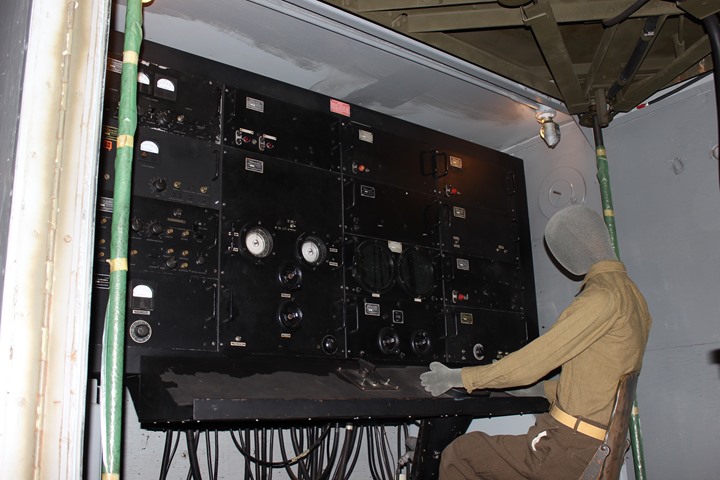
Westinghouse supplied the electronics for
the SCR-584. Author's photo.
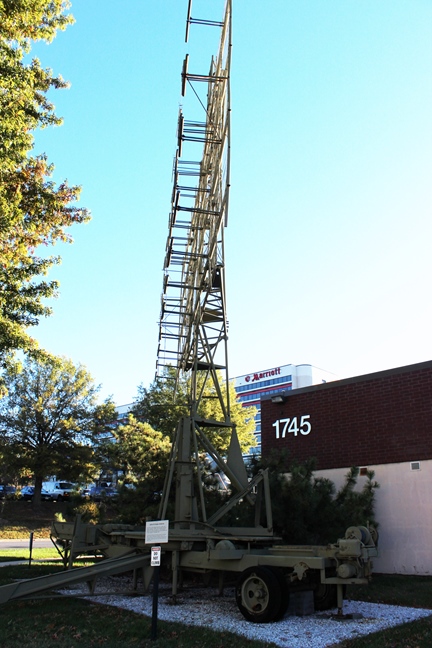
This
SCR-270 mobile long-range aircraft detection radar antenna and trailer
are also on display at the National Electronics Museum in
Linthicum, MD. Fruehauf built trailers for the 397 SCR-270s made
during World War Two. Author's photo.
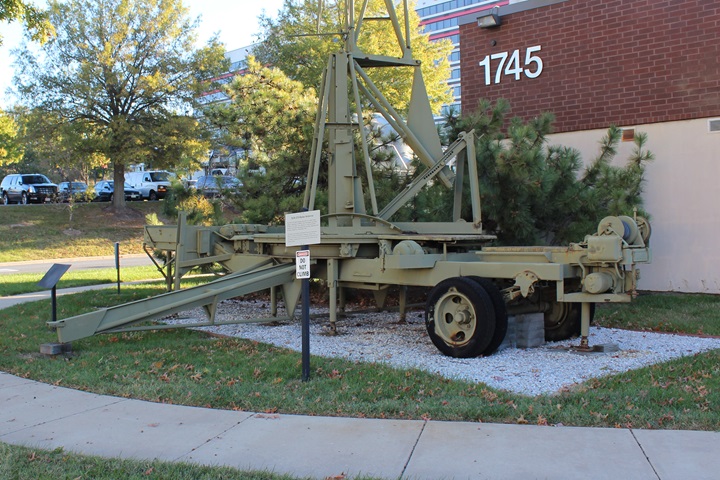
Author's photo.
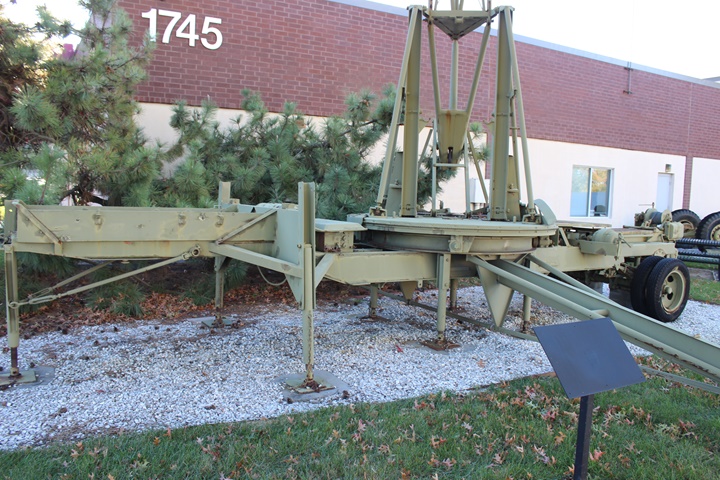
Author's photo.
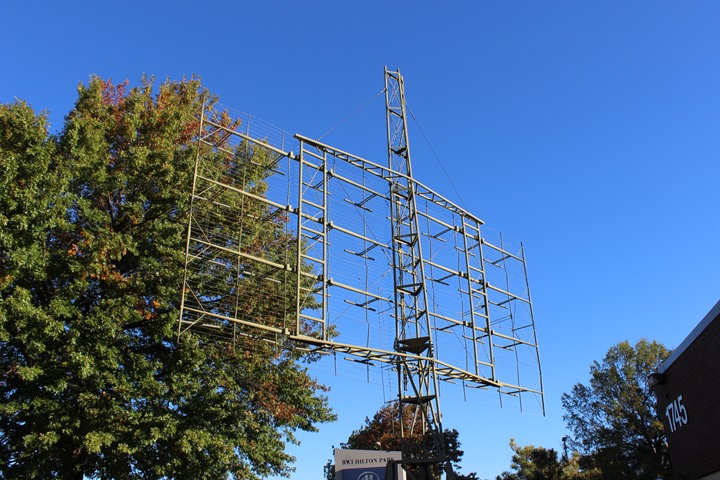
Author's photo.
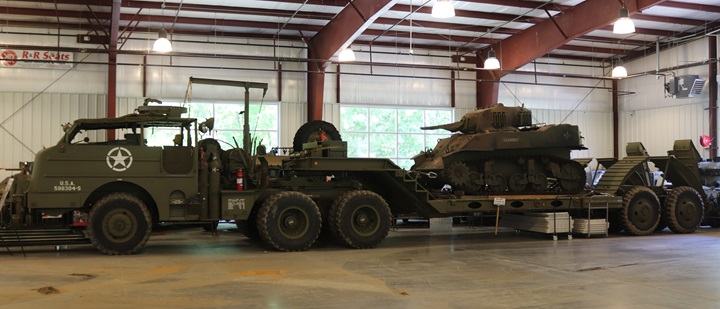
On display at the Museum of American Armor
in New Bethpage, Long Island, NY is this M25 tank transporter, which
consists of an M26A1 tractor and an M15A2 semi-trailer. The tractor
was built by Pacific Car and Foundry, and the trailer was built by Fruehauf
Trailer Company. Author's photo.
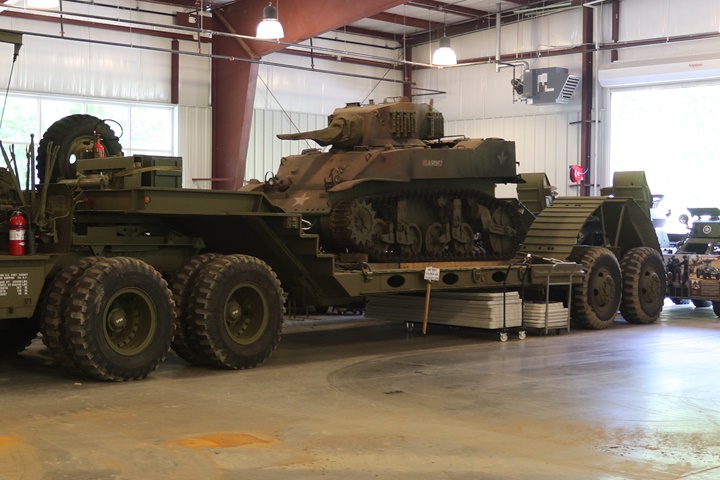
Fruehauf was the only supplier of the M15
series trailer. It is probably the most famous of all of the trailers built during World War Two. The M25
Dragon Wagon tractor and trailer have reached somewhat of a cult status
among military vehicle enthusiasts. Author's photo.
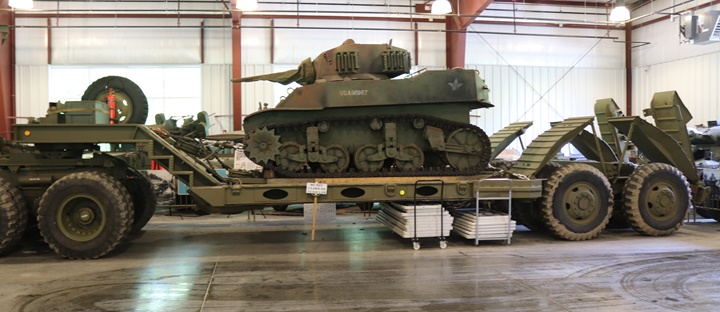
Author's photo.
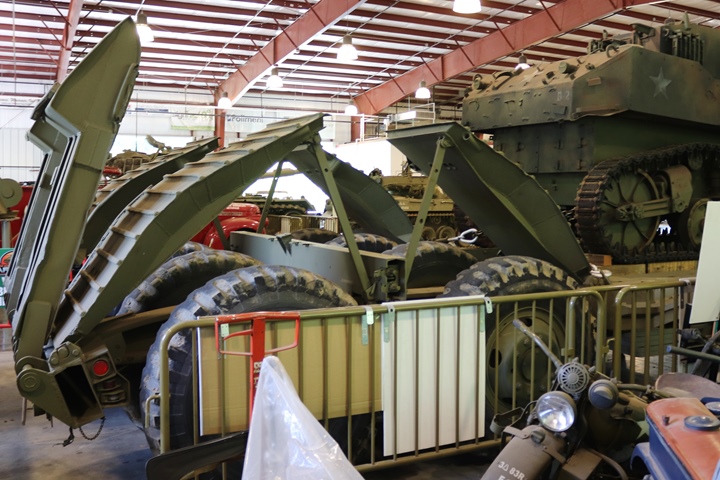
Author's photo.
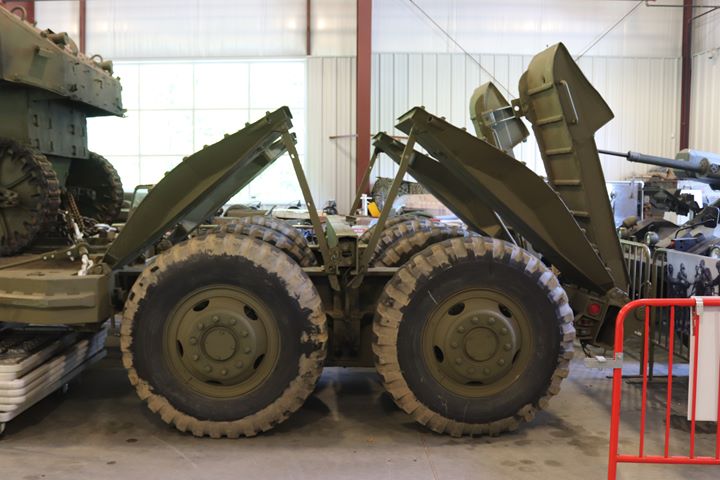
Author's photo.
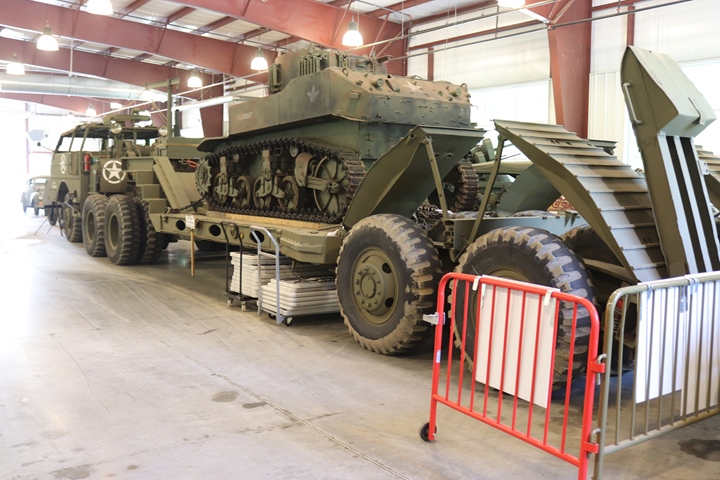
Author's photo.
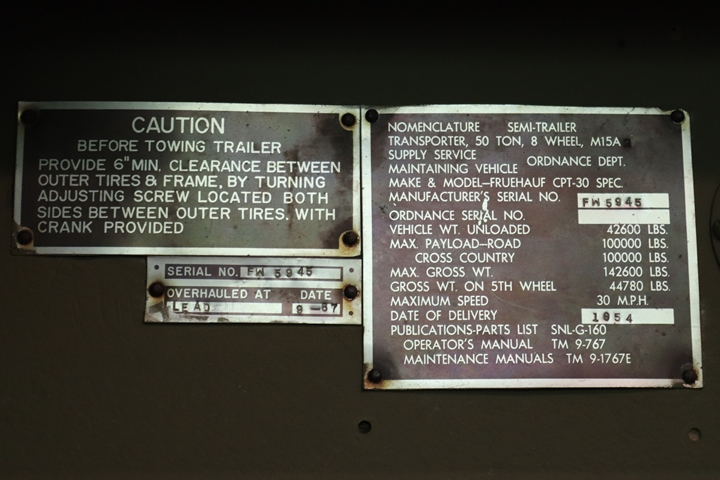
This trailer is Fruehauf Trailer serial
number FW5945. The data plate indicates this is a post-World War
Two-built trailer.
Author's photo.
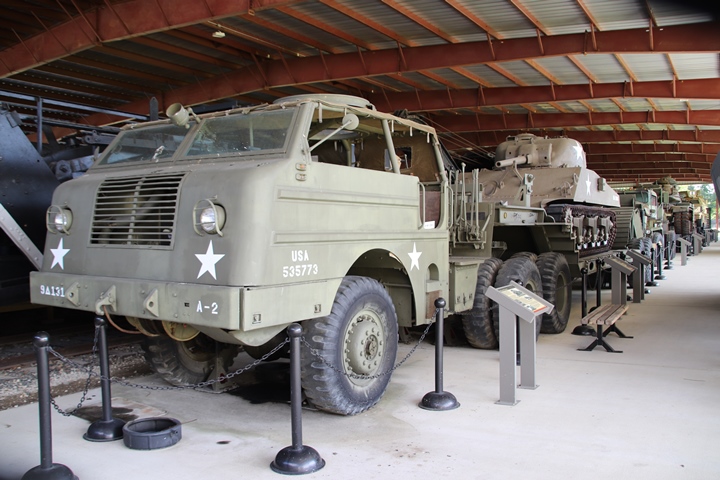
This M25 tank transporter is on display at
the Army Transportation Museum at Fort Eustis, VA. It has a
Fruehauf-built M15A2 semi-trailer with a Sherman tank on it.
Author's photo added 2-10-2025.
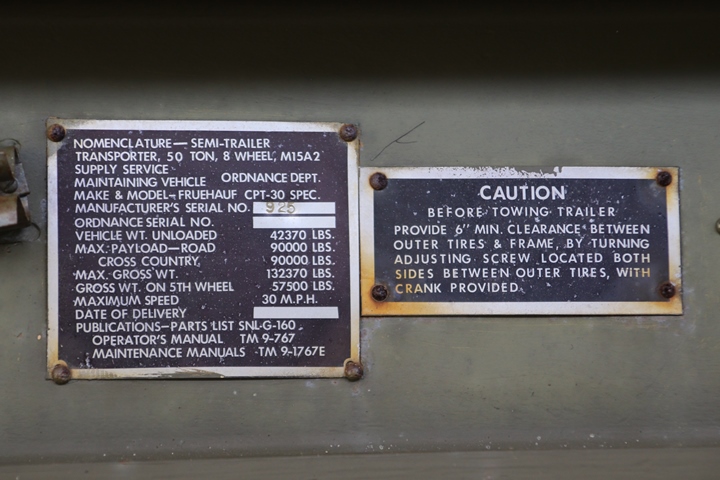
The trailer is serial number 925.
Author's photo added 2-10-2025.
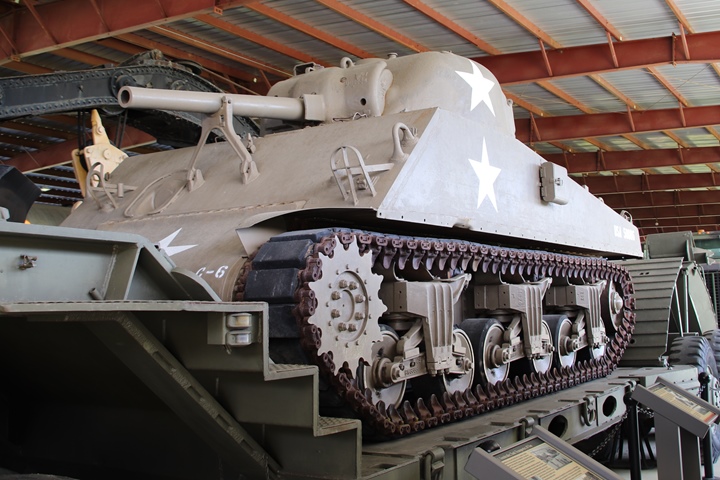
Author's photo added 2-10-2025.
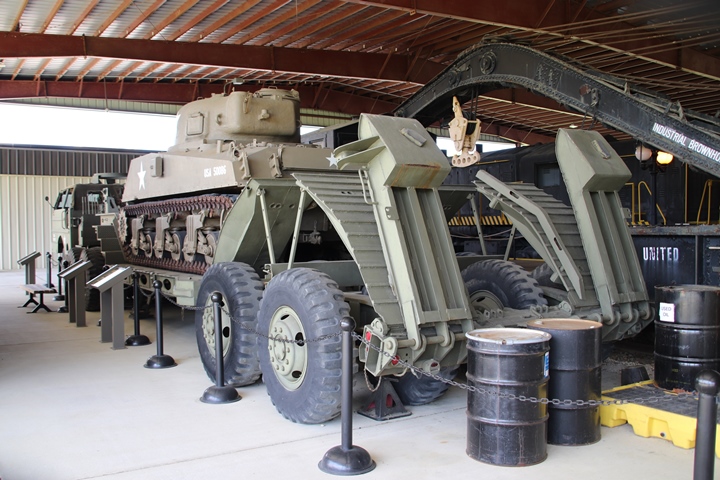
Author's photo added 2-10-2025.
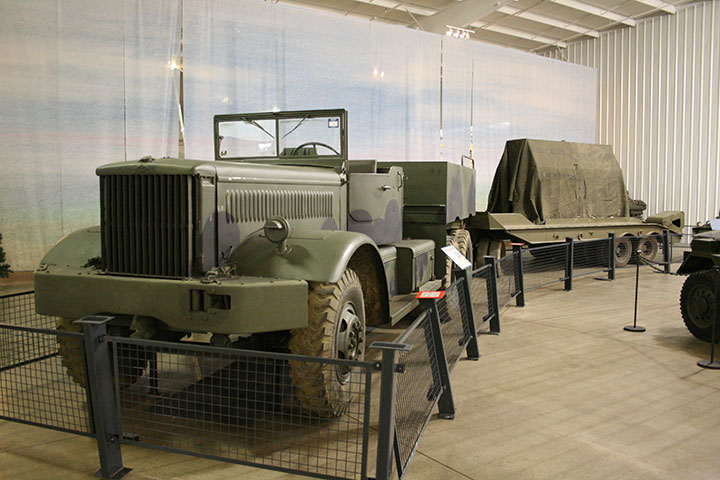
This is an M19 Heavy Tank Transporter with a Diamond T M20 and an M9
trailer. Fruehauf Trailer built 1,632 M9 trailers during World War
Two. It was Fruehauf Model CPT-45SP. It was one of four companies that built a total of 6,143 M9
trailers during the war. Author's photo.
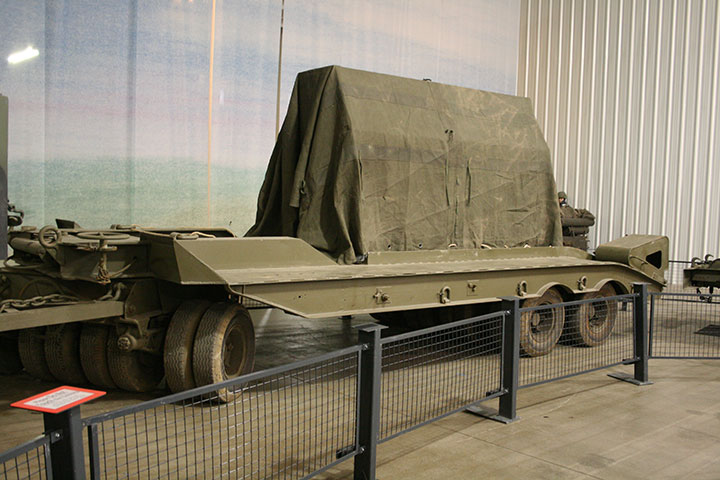
Author's photo.
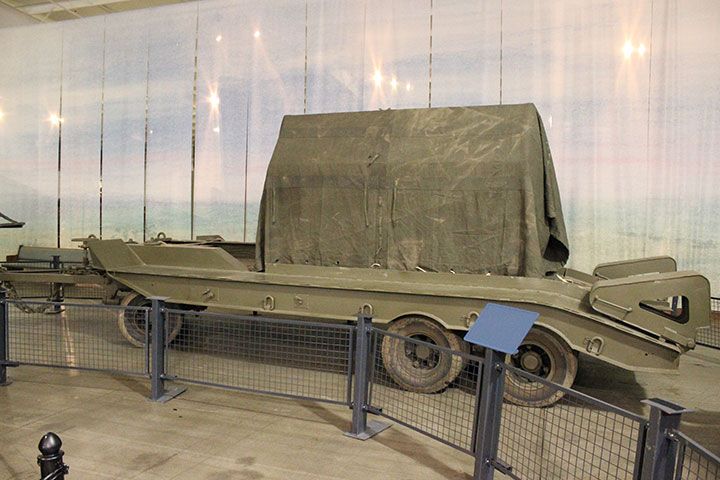
Author's photo.
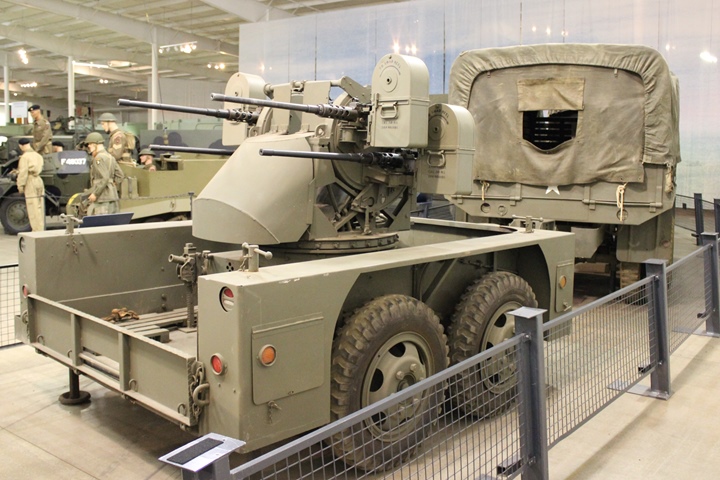
The M17 trailer was part of the quad M51
weapon system used during World War Two. The M17 was one of three
trailers built by Fruehauf Trailer under the G-221 classification.
Fruehauf also built the M1 searchlight trailer and the M-18 generator
trailer. Author's photo.
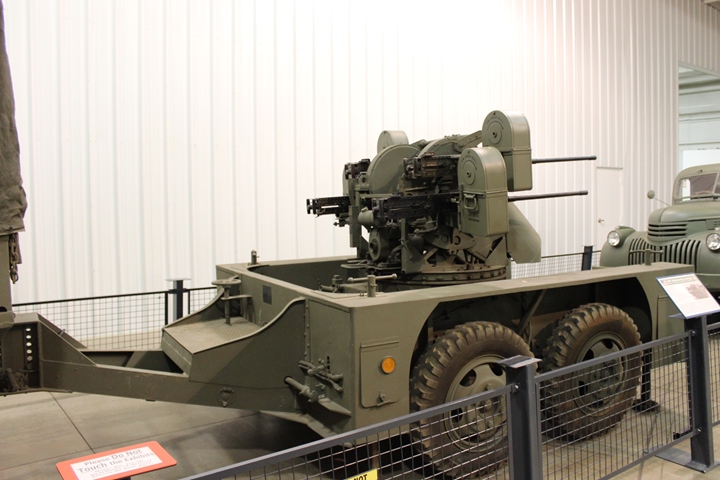
Author's photo.
|



























